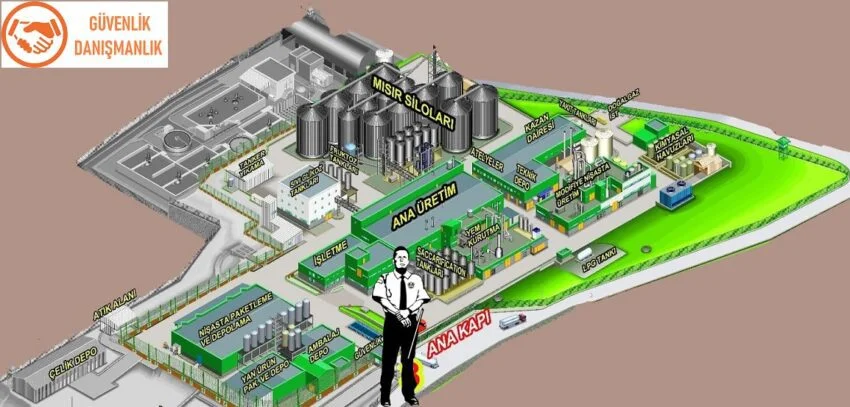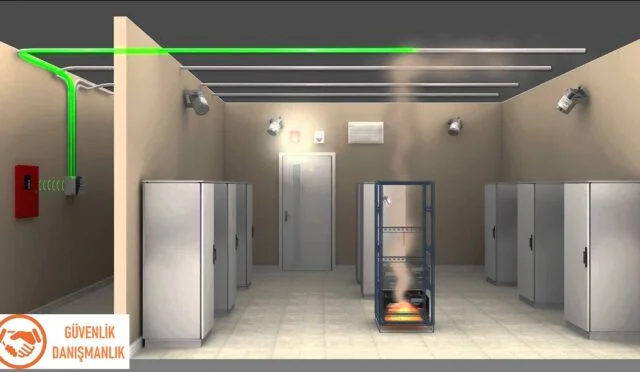Security Procedures in Large Buildings
The security measures that need to be implemented at the entrances of large-scale buildings may vary depending on the size and purpose of the building. However, generally the following measures can be taken:
- Barrier systems: Barrier systems that are selected according to the entrances of the building can be installed. These systems can be used to control vehicle traffic and prevent vehicles from entering the building.
- Security cameras: Security cameras can be placed at the entrance and around the building. These cameras can monitor the comings and goings of people and vehicles. The footage can be used as evidence if necessary.
- Card access systems: These systems allow people who want to enter the building to do so with a pre-determined card or identification. This way, the identities of people who want to enter the building are checked, and security is increased.
- Metal detectors: Metal detectors detect metal objects on people who enter the building. This prevents entry with weapons or similar dangerous objects.
- Security personnel: By placing security personnel at the entrance of the building, entrances and exits can be monitored. These personnel can perform identity checks and supervise the entry of vehicles and people.
- Emergency plans: By taking measures such as emergency plans and evacuation routes at the entrance of the building, possible emergency situations can be prepared for.
- Periodic security inspections: It is necessary to periodically conduct security inspections for the security of large-scale buildings. These inspections are conducted to identify and eliminate security vulnerabilities in the building.
- Personnel training: It is important for employees to receive security training for the security of buildings. Training can cover topics such as security procedures, emergency plans, and fire prevention measures.
- Second layer of security: For the security of large-scale buildings, a second layer of security may be necessary. This layer can be provided by taking different security measures in different areas of the building.
Some security procedures that can be applied at building entrances may include:
- Identity verification: A identity verification system can be used to verify the identity of visitors at building entrances. These systems use different technologies such as card readers, fingerprint scanners, or facial recognition systems to check visitors’ identities.
- X-ray machine: X-ray machines can be used to check the belongings carried by visitors at building entrances. These machines scan visitors’ bags, suitcases, or other items for any threat.
- Metal detector: Metal detectors can be used to detect metal items carried by visitors at building entrances. These devices can detect weapons, knives, or other metal objects on visitors.
- Security personnel: It is also important to have security personnel at building entrances. This personnel can check visitors’ identities, scan their belongings, or use a metal detector to detect metal items on visitors.
- Emergency procedures: It is important to create emergency procedures at building entrances. These procedures determine what should be done in case of an emergency and ensure the safety of employees or visitors.
- CCTV cameras: Using CCTV cameras at building entrances can be monitored by security personnel and incidents can be quickly intervened. In addition, security cameras can be used as evidence to identify and catch criminals.
- Fire alarm and firefighting equipment: Using fire alarms and firefighting equipment at building entrances ensures a quick response in case of a fire. Proper installation and regular maintenance of this equipment is important.
- Visitor registration system: Using a visitor registration system at building entrances is also important. This system records visitors’ identities, determines which areas they can access, and how long they can stay. This prevents unauthorized people from wandering around the building.
- Access for people with disabilities: It is important to provide access for people with disabilities at building entrances. By using disabled ramps, elevators, or other assistive devices, disabled people can move comfortably inside the building.
- Attack prevention measures: Finally, it is important to take attack prevention measures at building entrances. These measures may include barricades, trenches, projections, or high walls. However, since such measures can have a negative impact on building aesthetics, they need to be planned appropriately.
Visitor Registration System in Buildings:
Visitor registration system is a security procedure that enables the recording and identification of visitors entering a building. This system is used to enhance security within the building, prevent unauthorized access, and determine which areas visitors can enter.
The visitor registration system is typically used at a desk or computer located at the entrance of the building. Visitor identification information, photos, and visit purposes are recorded in this system. Visitors are granted access to the areas they are visiting, and their visit duration is determined.
This system not only ensures that only authorized personnel are moving around inside the building, but also increases the safety of visitors. In case of an emergency, knowing where visitors are can help provide quick assistance.

The visitor registration system can also be used as a security measure for the personnel inside the building. If the visitors’ identities and visit purposes are recorded accurately, the personnel inside the building can have an easier time knowing why the visitors are there and helping them if necessary.
The visitor registration system is quite important for building security and is used in many different sectors today. This system can be used in office buildings, airports, schools, hospitals, and many other areas.







